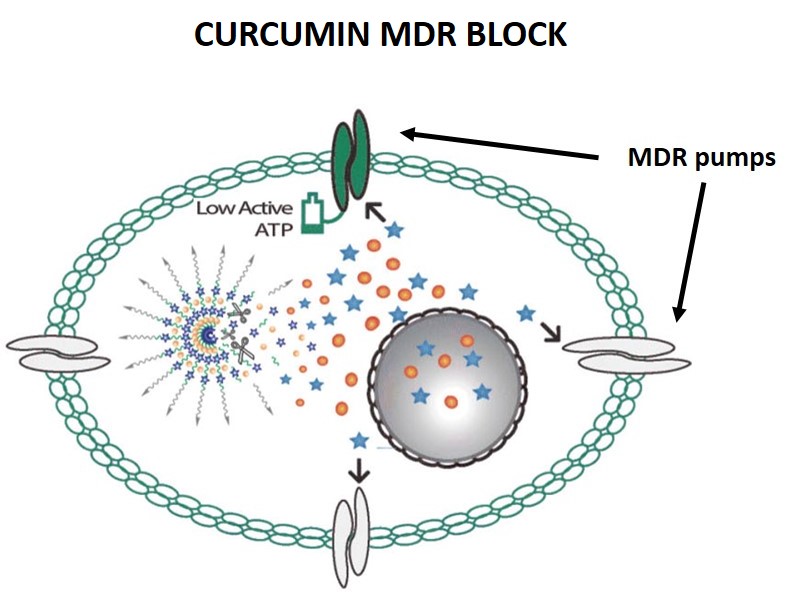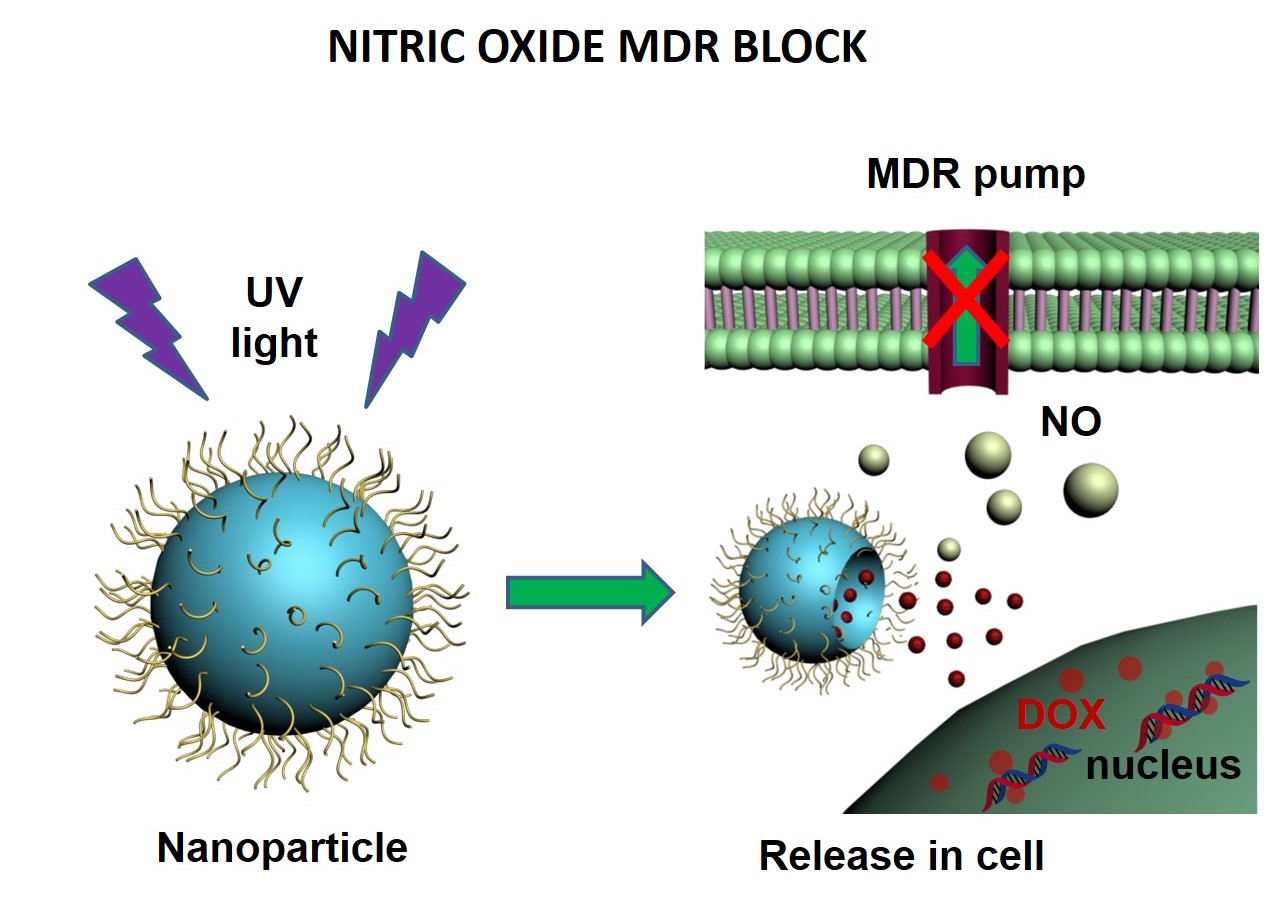Multidrug resistance (MDR) is the mechanism by which many cancers
develop resistance to chemotherapy drugs, resulting in minimal cell
death and the expansion of drug-resistant tumors. To address the problem
of resistance, researchers have developed nanoparticles that
simultaneously deliver chemotherapy drugs to tumors and inhibit the MDR
proteins that pump the therapeutic drugs out of the cell. The process is
known as chemosensitization, as blocking this resistance renders the
tumor highly sensitive to the cancer-killing chemotherapy.

The
two publications report on the engineering of two separate
nanoparticles that test different strategies for achieving
chemosensitization of cancer cells. The first targets MDR breast cancer.
The engineered round nanoparticle is made of several layers. The center
of the particle is loaded with the anti-cancer drug doxorubicin. The
drug is surrounded by a water-repelling (hydrophobic) capsule to protect
it from the watery environment when the particle is injected into the
circulatory system of an experimental animal or individual with cancer.
The particle has several outer layers with different properties. One
of the outermost components, a molecule called PEG, is hydrophilic
(mixes with water) and helps the particle move through the bloodstream
until it encounters the breast tumor cells. Another component on the
surface of the particle, biotin, functions to bind specifically to the
cancer cells and helps the drug-carrying nanoparticle to enter the cell.

Once inside the breast cancer cell, a fourth component called
curcumin, which is intertwined with the doxorubicin center, is released
along with the doxorubicin. The curcumin is the component that blocks
the cell machinery that would pump the doxorubicin out of the cell.
Without the ability to pump out the medicine, the cell is exposed to
very high concentration of doxorubicin, which kills the breast cancer
cells.
Full story can be found from
NIH website.


No comments:
Post a Comment